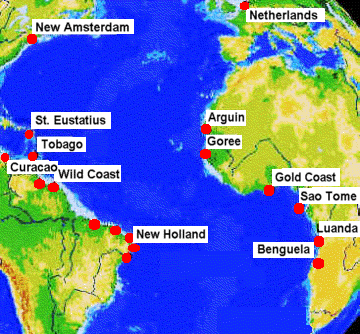 SKC Films Library |
| SKC Films Library >> Sociology >> Social Classes |
| Dutch West India Company Founded by letters-patent from the Netherlands States-General dated June 3, 1621, The purpose for the Dutch West India Company was to regulate and protect the contraband trade already carried on by the Dutch in the American and African possessions of Spain and Portugal, and to establish colonies on both continents and their islands. By the terms of the charter the company was to be composed of five boards, established in Amsterdam, Zeeland, the Meuse (Rotterdam), the North Department (Friesland and Hoorn), and Groningen. Each was to be represented on the general governing board according to the importance of the capital contributed by it. Thus Amsterdam, which contributed four-ninths of the capital, had eight directors on the board; Zeeland, which subscribed two-ninths, had four; Rotterdam was represented by two directors; and The North Department and Groningen appointed one director each. The company was granted a 24-year monopoly of the trade with America and Africa and between them, from the Arctic regions to the Straits of Magellan, and from the Tropic of Cancer to the Cape of Good Hope. The policy the company followed was to use its monopoly on the coast of Africa to secure a cheap and regular supply of slaves for the possessions it hoped to acquire in America., and the slave trade became a principal operation of the company in 1638. The general board was endowed with ample power to negotiate treaties, and make war and peace with native princes; to appoint its officials, generals and governors; and to legislate in its possessions subject to the laws of the Netherlands. In case of war the States-General agreed to contribute sixteen vessels of 300 tons and upwards for the defense of the company, which however, was to bear the expense of maintaining them. In return for these aids the States-General claimed a share in the profits, stipulated that the company must maintain sixteen large vessels (300 tons and upwards) and fourteen "yachts" (small craft of 50 to 100 tons or so); required that all the company's officials should take an oath of allegiance to the Netherlands as well as to the board of directors; and that all dispatches should be sent in duplicate to the government and to the board. At its heyday (1640-1645), the Dutch West India Company had settlements and/or forts in New Amsterdam (present-day New York City), New Holland (part of present-day Brazil), Curaçao, Aruba, Tobago and several other Caribbean islands, as well as in the present-day countries of Guyana and Suriname. It also had forts along the African coast, in present-day Mauritania, Senegal, Ghana, São Tomé, and Angola. However, it was never as successful at its trading ventures as its "sister company," the Dutch East India Company, which had a monopoly on trade in Asia and the East Indies. In addition, Dutch settlements in America were under almost constant attack from either the British, Spanish, or Portuguese.
By 1654 the Portuguese had taken all of Dutch Brazil. By a treaty signed in 1661, the Netherlands gave up all of its territory in South America, except for Suriname and Essequibo (present-day Guyana). The English captured New Amsterdam in 1664, and the Dutch effort to colonize the Americas effectively came to an end. The original Dutch West India Company was dissolved in 1674. A new company, formed in 1675, was able to maintain the few Dutch possessions in America until 1794, when the French invaded Holland. Another Dutch West India Company was formed in 1828 to again attempt to develop trade, but it was never successful. PRINT SOURCE WEB SOURCE SEE ALSO |
| SKC Films Library >> Sociology >> Social Classes This page was last updated on June 02, 2018. |
